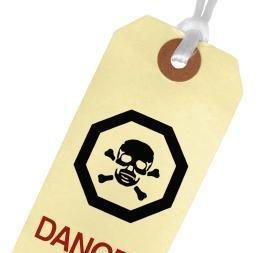Aon conducted a series of workshops on ERM and the rating process. Alex Hindson and Grant Foster present the results
On May 7 Standard & Poor’s (S&P) announced that the agency would enhance its global rating process for non-financial companies to include a review of their Enterprise Risk Management (ERM) programmes.
The S&P reviews will focus predominantly on strategic risk management and risk culture and governance, two widely applicable aspects of ERM.
Aon conducted a series of workshops and discussion groups during September 2008 where risk managers looked at these issues. Between 40 and 50 risk managers were involved overall. The workshops opened up a debate and sought to draw conclusions on whether this was a threat or an opportunity.
Everyone saw this as a relevant issue. When asked who they felt was the primary contact within their organisation with rating agencies, the majority believed this to be the finance director. Interestingly over a third of risk managers were not aware who owned this relationship and a number undertook to find out and ensure these managers were aware of their current ERM programmes.
Many risk managers felt they should conduct a gap analysis of the current ERM processes and systems against S&P expectations. Others saw that there was a need to take practical steps to address key shortcomings right away.
Participants were asked to consider which parts of their current ERM programmes might need attention.
The soft issues associated with changing senior management behaviours and culture were at the heart of an effective ERM programme. Risk managers were unanimous in identifying risk communication as the key area to address across organisations as well as making stronger links between the ERM process and strategic decision-making at Board level.
When participants were asked if this initiative was worthwhile, the majority believed S&P development was broadly positive and could help in the embedding of ERM in organisations. Key however was how S&P were planning to implement this change. The relative scoring of different organisations and the level of influence these factors had on credit ratings would be important, they said. A number of participants expressed concern about how ‘soft’ factors might be allowed to change a relatively ‘hard’ financial metric such as a credit rating.
S&P’s announcement provides a timely opportunity for companies to conduct an objective, third-party review of their ERM programmes prior to the official S&P risk management reviews. Senior management of rated companies need to demonstrate an ability to incorporate risk information as a part of the strategic decision-making process in order to score well on the S&P ERM assessment.
Addressing an organisation’s state of preparedness for the impending S&P ERM review could potentially drive meaningful financial benefits including a reduced cost of servicing debt, improved access to capital and the cost of capital, and increased investor confidence.
Clearly timing is everything. Given the turmoil in the financial markets, anything that may enhance or protect credit ratings could have a material impact on the cost of debt. It is often said that demonstrating the return on investment for ERM is difficult. However any impact on the cost and the access to capital is going to be highly significant in coming months.
As Standard & Poor’s rolls out their ERM evaluations between now and the first part of 2009, risk managers and those responsible for ERM are likely to be drawn into new discussions regarding their processes and their potential influence on credit ratings and the cost of capital. For those adequately prepared, this is an opportunity to position ERM as a strategically important process within their business.
Alex Hindson, Head of Enterprise Risk Management, & Grant Foster, Associate Director,
Aon Global Risk Consulting
Alex.Hindson@aon.co.uk / Grant.Foster@aon.co.uk



















